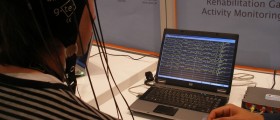
Types of Aids
As stated, some aids are fitted inside the ear and others behind the ear. There are also variants within these categories, for example ultra-fine open-fit devices, disposable aids, bone-anchored aids and eyeglass aids. Many aids use directional or omni-directional microphones to regulate signal-to-noise ratio and thus improve speech clarity. Telecoils can also be used in hearing aids in order to allow connectivity with audio sources. Some hearing aids even include Bluetooth, FM radio devices, wireless microphones that eliminate background noise and stereo and TV connectivity. However, putting aside added features, the basic components of hearing aids are microphones, receivers, batteries and varying types of electronic circuitry.
Digital Hearing Aids
Digital aids are more advanced than analog aids, which we shall look at later. These hearing aids are often known as audio or programmable aids. Unlike analog aids, the components and circuits are completely digitized, as the name suggests. This fact allows for complete customization of all the parts involved, while also allowing for upgrades to be installed when required or desired.
Digital hearing aids come with the most features and generally offer the best service. They are flexible in terms of being adjustable and adaptable, and they offer a wide variety of features, such as feedback reduction. The devices can also reduce background noise and detect and adapt to different listening environments. Their capabilities also allow for the addition of microphones that can catch transposed frequencies, while the digital circuitry allows wireless transmission to preserve spatial hearing ability. These are the types of aids that can include features like mobile phone, internet and music player connectivity.
Analog Hearing Aids
Analog aids function through the employment of an audio circuit fitted with electronic components. These parts are normally preset by an otolaryngologist and can be adjusted with either small external controls or through built-in variants. Thus the end-user can adjust volume as desired. In order to program the audio circuit, the control circuitry can be connected to a computer. As for activation, this is usually achieved through pressing a particular button or via remote control.
- www.nhs.uk/live-well/healthy-body/hearing-aids/
- www.who.int/medical_devices/innovation/compendium_med_dev2012_17.pdf
- Photo courtesy of Bundesinnung Hu00f6rakustiker by Flickr: www.flickr.com/photos/134783624@N07/22161637404

















Your thoughts on this
Loading...